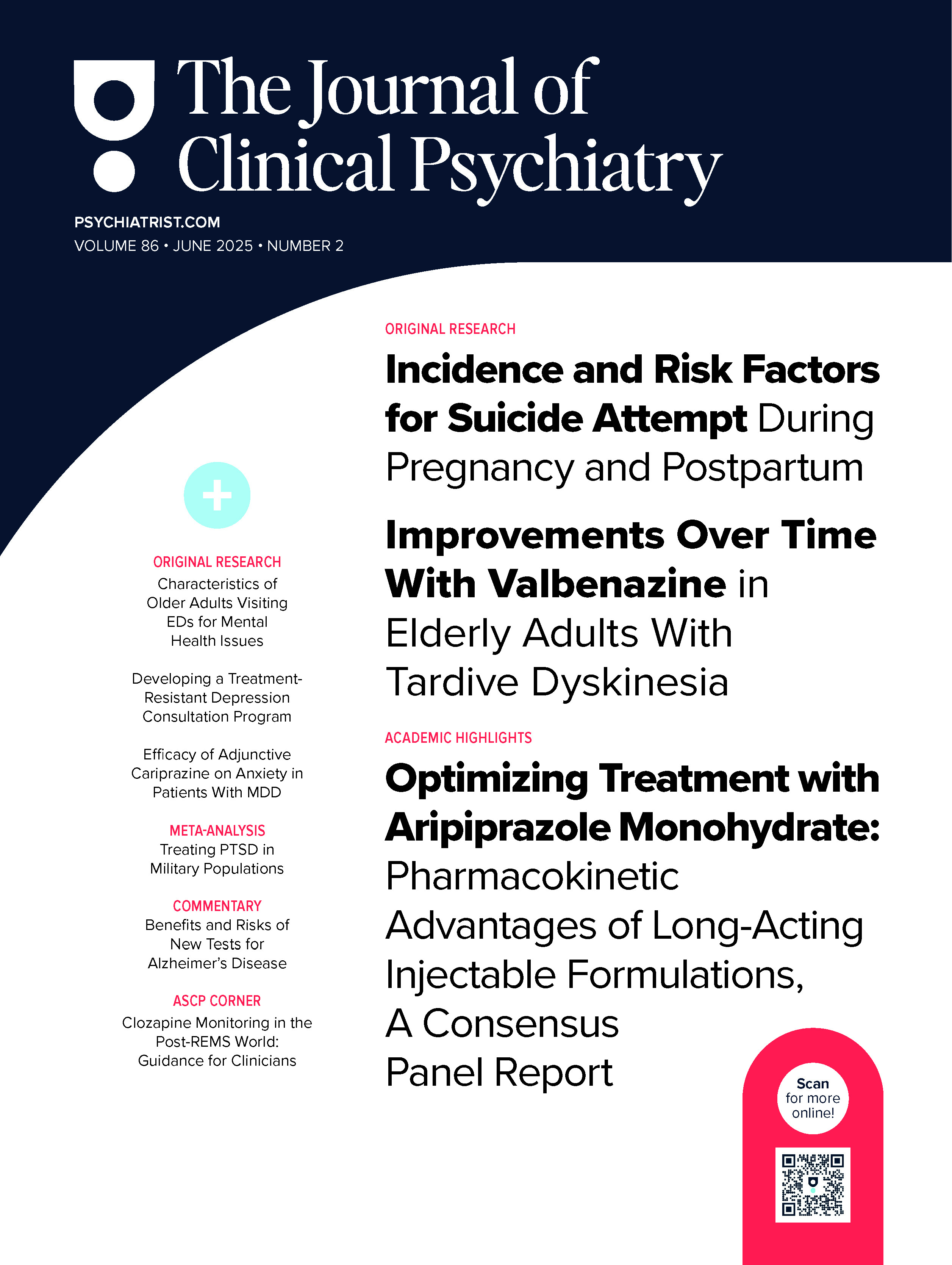Find more articles on this and other psychiatry and CNS topics:
The Journal of Clinical Psychiatry
The Primary Care Companion for CNS Disorders
Article Abstract
Background: While monotherapy has significant limitations in bipolar disorder, few published data addressing alternatives exist. Treatment algorithms have been proposed, but none have undergone empirical evaluation. This study provides a systematic prospective, open evaluation of the effectiveness and tolerability of a treatment algorithm for patients with histories of mania.
Method: Twenty-eight symptomatic outpatients from a public mental health facility who were diagnosed as having either bipolar I or schizoaffective illness, bipolar type, entered the study. Minimum blood levels of lithium and divalproex sodium were defined. Medications were pushed to predetermined levels (as tolerated) before proceeding to the next algorithm step. Clinical symptoms were assessed monthly using the Brief Psychiatric Rating Scale (BPRS, 27 item) and Clinical Global Impressions scale.
Results: Pretreatment and posttreatment clinical symptoms were compared. Over 50% of patients attained 30% improvement from baseline BPRS after 4 months. Thirty-six percent of patients (N = 10) became mood stable, 46% (N = 13) remained mood unstable, and 18% (N = 5) dropped out before completing the algorithm. Although patients who finished the algorithm were taking more medication, either dosage and/or drugs, somatic complaints did not increase.
Conclusion: The potential benefit of a defined treatment algorithm was demonstrated for these complex and persistently ill patients. Despite long treatment histories, patients improved with more frequent visits and addition of medication(s). A randomized controlled trial comparing a similar treatment algorithm with treatment-as-usual is warranted.
Members Only Content
This full article is available exclusively to Professional tier members. Subscribe now to unlock the HTML version and gain unlimited access to our entire library plus all PDFs. If you’re already a subscriber, please log in below to continue reading.
Please sign in or purchase this PDF for $40.00.
Already a member? Login



